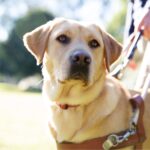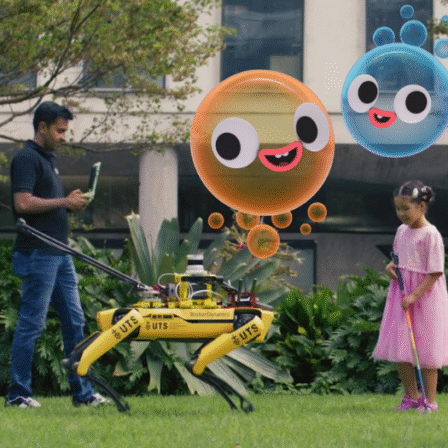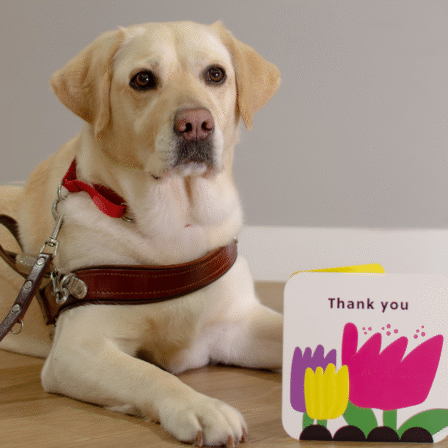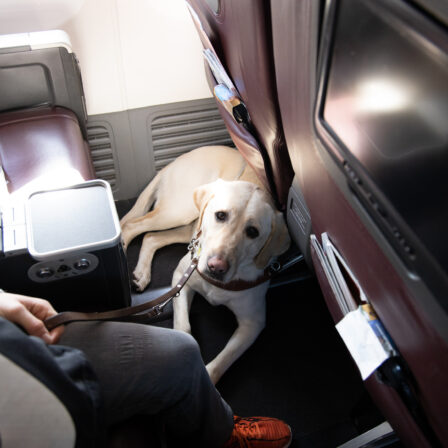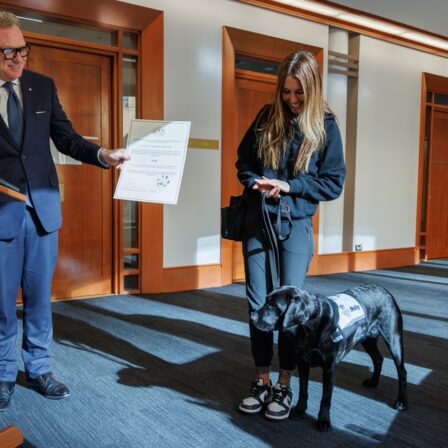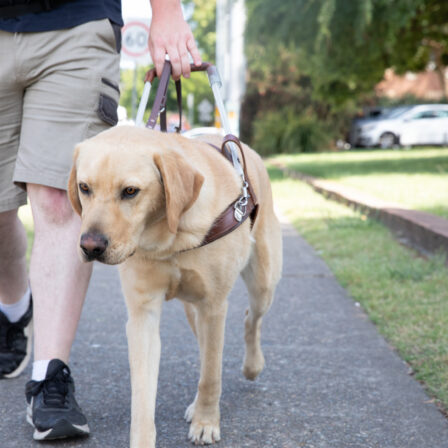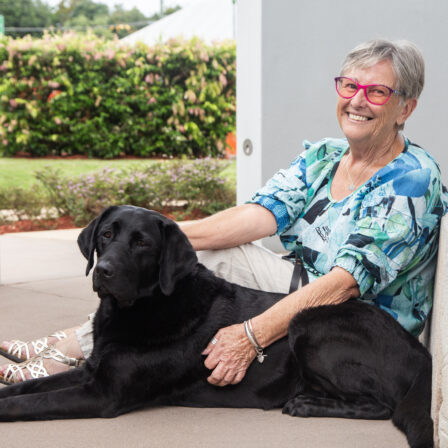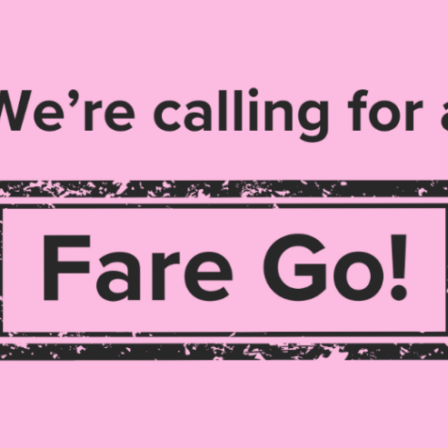News
Tech distracted Aussies regularly block the path of white cane users, says Guide Dogs Australia survey
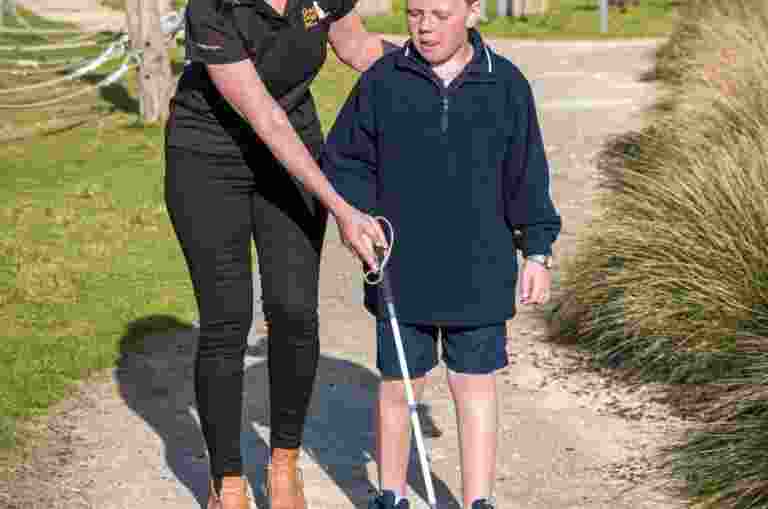
Two thirds experience daily obstructions to their path, with half being made unsafe.
Australia, October 13, 2022: This International White Cane Day Guide Dogs Australia’s ‘Look up. Listen Up. Let me be.’ campaign is urging the public to be more aware of how they might be obstructing people with low vision or blindness, with the aim of making our streets safer and more accessible for all.
Crucially it asks that people look up from their phones and turn the volume down or off – as well as discouraging would-be helpers from grabbing white cane users, or their canes, without asking do they need help first.
A recent Client survey by Guide Dogs Australia ahead of International White Cane Day on October 15, shows that 3 in 4 cite people distracted by mobiles and headphones as the key cause of obstructions to their path of travel.
Following device distraction, around half of the respondents identified people riding bikes and scooters on pathways as one of the main ways they’ve been put in danger, with these incidents often leaving them feeling at risk of physical harm.
These high-speed instances could also contribute to around half of respondents saying they took no action when their path was obstructed. Around a third did address the incident directly with the person involved, but there’s clear room for the community at large to do more.
However, this should not take the form of physical intervention. Alarmingly, a third of Guide Dogs Australia Clients report having themselves or their cane touched or grabbed without being asked, with the majority requesting people just ask before offering assistance.
The most common impacts of these issues include increased anxiety while out, as well as feeling unsafe or even being put at risk of physical harm. This leaves members of the blind and low vision community feeling frustrated and annoyed by their experiences.
Guide Dogs Australia Client and white cane user Hannen Abdallah said “Before I started receiving services from Guide Dogs I was scared to travel on my own. I was shy and wouldn’t ask people for help. My cane and travel training has really helped me to open up, build my confidence and break my isolation. Now I have more confidence and I go everywhere!”
“However, one of the main challenges I experience when out and is people with their heads in their mobile phones. It’s awkward if I bump into them with my cane. Also, it’s great when people ask do I need assistance, but if I say no, please let me keep on my way. By grabbing my arm or taking me off my known path, I can get distracted and disoriented and have to retrace my steps.”
Ryan Jones, Orientation and Mobility Specialist with Guide Dogs said “White cane use is very skilled and concentrated work, it takes time to feel for platforms, surface textures, or kerbsides, as well as ensuring the pavement is flat and safe. Our Clients work really hard to learn how to do that as it offers them a lot of independence, so you can only imagine how frustrating it would be to have someone walk or bump into you, or even grab you.”
“While the majority of the community do the right thing and just want to help, we can all level up our awareness game to make our streets and public spaces a safer environment for everyone.”
Level up your awareness game:
Paralympic Medallist and Guide Dogs Ambassador Jaryd Clifford shares his top tips for how to create a safer community for everyone:
- Look up from your mobile phone, device or whatever else might have your attention.
- Listen up, by lowering your earphone volume.
- Let them be. If you see a person with a white cane, be aware and give them space to navigate.
- Never grab or touch a person with a cane without their permission. Always ask the person first if they would like assistance and if so, how.
